
TRANSFORMER PROTECTOR CORPORATION
I. INTRODUCTION
Power transformers are one of the most dangerous electrical equipments because of the large quantity of oil they contain which is in direct contact with high voltage elements. Under such circumstances, low impedance faults that result in arcing can appear in transformer tanks once the oil loses its dielectric properties. Oil is then vaporized and the generated gas is pressurized because the liquid inertia prevents its expansion. The pressure difference between the gas bubbles and the surrounding liquid oil generates a dynamic pressure peak, which propagates and interacts with the tank. The dynamic pressure peak interactions with the tank structure generate reflections, which build up static pressure. Then, the static pressure rises leading to tank explosion and possible fire resulting in very expensive damages for electricity facilities, possible environmental pollution and human life risks.
To avoid such damages, the transformer explosion and fire prevention strategy presented in this paper, here called Transformer Protection (TP), is based on the direct mechanical response of a Depressurization Set (DS) to the tank inner dynamic pressure peak due to an electrical fault. Since transformers always rupture because of the static pressure at their weakest point, the DS is designed to be this weakest point in term of inertia to break with the dynamic pressure peak before the tank explodes. Thus during a transformer short circuit, the TP is activated within milliseconds by the first dynamic pressure peak of the shock wave generated by the electrical fault and before static pressure increases. It then depressurizes the tank by expelling the oil and gas mixture.
This fast direct tank depressurization method has been experimentally studied by arcing tests in industrial size oil-immersed transformers. Physical modeling and numerical tools, validated on collected experimental data, have been developed in order to test the TP reliability in various operation conditions. The following sections thus deal with:
• §2, brief description of the protection;
• §3, the experimental campaign carried out on arcing in large transformers;
• §4, the theoretical and numerical developments which results prove the reliability of the whole prevention strategy.
II. DEPRESSURIZATION STRATEGY DESCRIPTION
Mitigating the effects of a transformer explosion consists in either limiting the explosion consequences by extinguishing the subsequent fire (fire walls or sprinklers) or preventing tank explosion by using mechanical technologies that absorb the high overpressures generated by the electrical arc, thus preventing the tank rupture and the subsequent fire.
The explosion prevention technology presented in this paper is of the second sort. This fast-direct-tank-depressurization-based method activates as soon as the high pressure peak of the pressure wave reaches it.
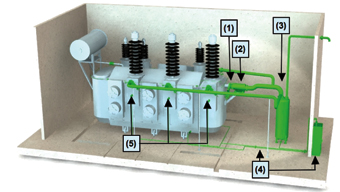
Figure 1: Transformer equipped with fast direct tank depressurization based method (TP)
Indeed, the electrical fault generates a dynamic pressure peak, which travels at the speed of the sound inside the transformer oil, 1,200 Meter per second (4,000 feet per second). This dynamic pressure peak bursts a rupture disc located in the DS (Item 1 in Figure 1). Oil and gas are then quickly expelled out of the transformer tank through the DS (located in 2) to an oil gas separation tank (item 3). The explosive gases are then channeled away to a remote and safe area.
Then, nitrogen is injected (item 4) to have the whole transformer safe, cool and ready for repairs. Note that additional DS can be placed in order to protect the OLTC or the OCB (item 5).
III. THE EXPERIMENTAL CAMPAIGNS
Up to now, two test campaigns have been performed, both under the worst conditions by creating low impedance faults leading to electrical arcs inside the transformer tank dielectric oil. In 2002, Electricité de France performed 28 tests. Then, in 2004, a second campaign of 34 tests was carried out by CEPEL, the Brazilian independent High Voltage Laboratory. This part presents the main conclusions of the last test campaign performed on large transformer tanks.
A. The CEPEL experimental campaign
The 34 tests carried out in transformer tank dielectric oil by CEPEL in 2004 were performed in order:
• to study the vaporization process induced by an electrical arc and the resulting pressure wave propagation,
• to evaluate a fast-direct-tank-depressurisation-based method to prevent transformer tank explosions.
Three standard transformers were used for these tests. The maximum distance between an electrical arc and the protection system ranged up to 8.5 meters (28 ft). Various physical parameters such as pressure, gas temperature, applied current, arc voltage and tank acceleration were studied in details.
1) Experimental settings
Each transformer was equipped with:
• arcing generation devices to master the arc location and make the tests repeatable,
• temperature probes,
• accelerometers, and
• pressure sensors at different locations in the transformer, in order to study the pressure wave propagation.
The transformer protection, the TP, was also installed on each transformer to study the ability to mitigate tank rupture by a tank depressurization method based on the fast and direct passive mechanical response of a depressurization set to the pressure wave.

Figure 2 : Life Tests Transformer Principle Drawings
2) Experiments
To study in detail the pressure wave propagation influence, the electrical arcs were ignited at three different locations, as shown in Figure 2: on the top cover close to the Decompression Set location (position A), on the top cover opposite the Depressurization Set location (position B), and in the lower part of the tank opposite the Depressurization Set location (position C). The position D shown in Figure 2 is the location where the depressurization set was installed.
Most of the tests were carried out with electrical arcs with currents ranging from 5 to 15 kA, and fed during 83 milliseconds. This duration corresponds to the average response time of an old circuit breaker and was chosen to maximize the generated gas volume.
B. Transformer Explosion Prevention: Test Results Analysis
1) Generated gas
During the CEPEL test campaign, the electrical arc produced from 1 to 2.3 m3 (35 to 88 ft3) of gas. For the tested energy range, the gas volume generated during an electrical arc is a logarithmic type function of the arc energy, which seems in accordance with the vaporization process and especially with the saturation of the vaporization for high energy arcs: the arc remains in the generated gas volume using its energy to crack the oil vapour rather than continuing directly vaporizing the oil, which results in a smoother vaporization process.
2) Pressure Profile Evolution at a Single Location The pressure at a specific location in the transformer after an electrical arc has occurred is transient as shown in 3, where an experimental curve of the pressure evolution close to the arc location after the arc ignition is displayed.
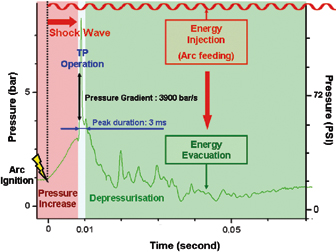
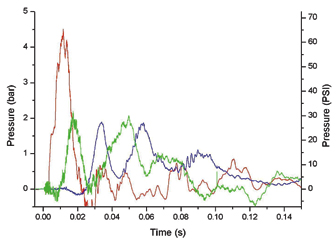
Figure 2 : Life Tests Transformer Principle Drawings
After the arc ignition the pressure locally rises and reaches a maximum level; the waves, generated by the arc, propagate at a finite speed through the transformer and burst the rupture disc with a pressure gradient of 3900 bar/s (56000 psi/s). Three milliseconds after the rupture disk burst, the pressure is back to the activation level. Some secondary peaks, much lower than the first pressure maximum, can be observed; they are due to wave reflections off the tank walls and reflected waves interactions.
As soon as the TP has activated, it can be noted that the arc can be fed for a period much longer than the standard opening time of a circuit breaker. Even in this severe condition, the pressure would remain at harmless levels for the transformer tanks.
3) Pressure Wave Propagation
In Figure 3, three experimental pressure profiles are displayed. Each curve shows what happens near each sensor located in positions A, B and C (see Figure 2).
The arc is generated in C and the shock wave propagation can be followed step by step because of the pressure peak’s displacement from C to A. The other pressure peaks (smaller than the main peak) are due to wave reflections off the walls.
The pressure does not rise spatially uniformly in the tank. The experiments show the pressure waves propagate in the oil at a finite speed.
4) Pressure Peaks
• Only one main pressure peak has been noticed for each test. The pressure profiles show variations after that main peak but their magnitude remains low compared to the first pressure peak level. They are due to waves reflections.
• The pressure peaks’ amplitude is determined by the created arc. This peak ranges from +1.5 to +13 bar (+21.75 to +188.55 psi) for arc energies from 0.01 MJ to more than 2.4 MJ.
• The pressure peak’s values do not strongly depend on the arc energy since when comparing tests for which pressure peaks respectively equal +8 bar (+116 psi) and +8.8 bar (127 psi), the maximum pressure only varies in 0.8 bar (11.6 psi) while the corresponding arc energies vary within on order 10 of magnitude (0.1 MJ and 1 MJ respectively).
5) Tank Withstand
To static pressure: To check the mechanical properties of the transformers, static tests were performed before applying any low impedance fault. The withstand limit was found to be +0.7 bar (+10.15 psi) for the biggest transformer, T3. This limit (+0.7bar, +10.15 psi) was used in the analysis as a threshold for tank depressurization during the dynamic tests.
To dynamic pressure: Even if the local pressure measured during the dynamic tests is on average 6 or 10 times higher than the static withstand limit, no tank damage and no tank permanent deformation occurs because the pressure peaks are very short. In fact, the structure can locally withstand high dynamic pressure increases because of the walls’ elasticity and the prevention method small inertia to operate.
6) Operation of the Transformer Protection
On average, the TP has activated after about 20 milliseconds (minimum: 4.64ms, maximum: 45.7 ms) after the arc was ignited. Because the pressure wave propagation speed is finite, the maximum distance between the arc location and the TP is the parameter that matters the most for the activation. In the worst situation, the arc occurs in the transformer lower part opposite the Depressurization Set (location C).
The depressurization time is the time between the TP opening and when the pressure is definitely under the level of +0.7 bar (+10.15 psi). On average, the TP depressurizes the tank in 116ms, with a minimum value of 19.7ms, and a maximum of 347ms. This experimentally proves the TP ability to depressurize the transformer tanks within milliseconds and prevent the explosion. The previous experimental data are also used in the numerical tool validation, which is the subject of the next sections.
IV. NUMERICAL SIMULATIONS A. Mathematical, Physical, and numerical Modeling
The set of equations used to theoretically and numerically describe the phenomena is a model for 3D compressible two-phase flows that is based on a set of Partial Differential Equations (PDE), which governs the hydrodynamic behavior of mixtures. It is described in reference [1].
One of the major and most interesting model’s characteristics is its ability to accurately depict the pressure wave propagation inside liquids and gases. Physical effects such as gravity, viscosity, and heat transfers are added in the modeling in order to be as close as possible to reality. It is detailed in reference [2].
A Finite Volume Method is thus adopted to numerically solve the PDE’s system (see [1]). It allows describing precisely complex geometries such as transformer tanks.
B. Numerical simulation results As showed in [2], simulations manage to give results in accordance with the experimental results, for a relatively low cost and without any danger. They were thus used here to compute the consequences of an electrical arc appearing in a tank not equipped with a TP and also to compute the protection operation on a very large transformer.
1) What would happen without protection during the CEPEL tests? Experimental testing would be dangerous if the transformer is not protected against explosion so numerical simulations were performed instead. Performing computations for a geometry and for arcing conditions similar to those of a CEPEL test shows that, after the arc feeding, the average pressure remains close to an equilibrium state equal to 7 bar (100 psi), much higher than the static withstand limit pressure.
Thus, during this test, if the transformer had not been equipped with the TP, the inner average pressure would have risen up to the static overpressure withstand limit. The transformer would have exploded as soon as the tank wall elasticity limits were over, i.e. as soon as the tank walls could not store any more mechanical energy due to the pressure increase.
2) Numerical simulation results: Explosion Prevention on a Large Transformer (400MVA)
A 400 MVA transformer (7.8 m (25.6 ft) long and 4 m (13 ft) high) is considered in that section. An electrical arc (11 MJ-arc generating about 3.3m3 of gas) ignites near a bushing, generating a 11 bar (160 psi) gas bubble.
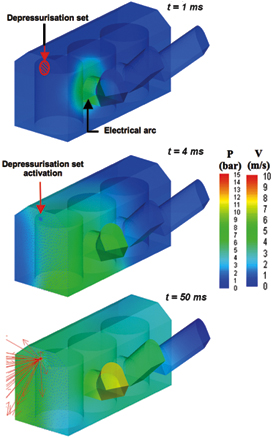
Figure 4: Chronology of the Prevention Technology Operation up to 50 ms
When the transformer is equipped with a TP, Figure 4 and Figure 5.a clearly show the pressure propagation inside the tank and the drain operation as soon as the first pressure peak has activated the depressurization set (4 ms after the arc occurrence, Figure 4).
The drained oil velocity is represented by vectors which color accounts for the velocity magnitude, V, ranging from 0 to 10 m/s (0 to 33 ft/s).
The drain gives place to the pressurized fluids so that after 120 ms, the pressure is back to safe levels (see Figure 5.a).
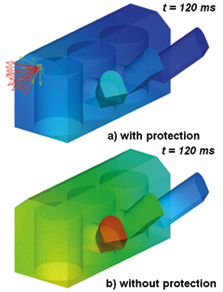
Figure 5: Inner Tank Pressure Evolutions a) with and b) without protection – Protection Efficiency Illustration
Otherwise, when the tank is not equipped with any protection system, and if it is subjected to a similar low impedance fault, the tank is still exposed to very dangerous pressure levels (up to 15 bars, 217 psi) after 120 ms (Figure 5.b): without the tank protection, the static pressure stabilizes around 7.5 bars (109 psi) and the transformer explodes. A technology based on a fast tank drain has thus a very positive effect on the tank protection.
V. CONCLUSION
TPC’s vocation is to study the prevention of explosion for all transformers and all types of rupture of insulation and its research program philosophy is to maintain a strong connection between experiments and the theoretical developments.
The experiments made by EDF as well as CEPEL showed the efficiency of the explosion prevention method. This one is based on the fast tank depressurization induced by the quick oil drainage out of the transformer. The oil drainage is triggered by the direct and passive mechanical response of a depressurization set to the pressure wave. Thus during a transformer short circuit, the TP is activated within milliseconds by the first dynamic pressure peak of the shock wave, avoiding transformer explosions before static pressure increases.
The tests’ results were also used to validate the computer simulation tool by comparison with experiments. Computer simulations were performed and highlighted the prevention technology’s ability to efficiently depressurize larger transformer tanks when subjected to internal arcing of high energy level.
VI. REFERENCES
[1] G. ALLAIRE, S. CLERC & S. KOKH, “A Five Equation Model for the Simulation of Interfaces between Compressible Fluids, Journal of Computational Physics, vol. 181, 2, pp. 577-616, 2002.
[2] G. PERIGAUD, H. CUNY, S. PRIGENT, P. MAGNIER, “Transformer Explosion and Fire Prevention, Live Tests on Large Transformers: Analysis and Simulations”, Australia, TechCon 2006.
About the Authors
Guillaume Perigaud is currently in charge of the Research Department of Transformer Protector Corporation (TPC) Houston, TX. He holds a PhD in Mechanics and Heat Transfers (Université de Marseille I, France, 2003), a Diploma of Mechanical Engineering and a MSc degree in Fluid Mechanics and Transfers (Ecole Centrale Nantes, Nantes, France, 2000). His main field of research interest is the prevention of transformer explosions due to internal arcing. He is an IEEE member involved in the Task Force regarding Transformer Tank Rupture Mitigation.
Sébastien Muller is a Transformer Protector Corporation (TPC) researcher. He holds a Diploma of Mechanical Engineering, and a MSc in Fluid Mechanics (ENSMA, Poitiers, France, 2002). He is Doctor in Fluid Mechanics (Université d’Orléans, France, 2007). He is an NFPA member, currently working on the development of a simulation tool that models the vaporization process due to the arc interaction with the liquid oil.
Gaël de Bressy is a Transformer Protector Corporation (TPC) researcher. He holds a Diploma of Mechanical Engineering and a MSc in Mechanics (IFMA, Clermont Ferrand, France, 2005). He is currently working on the development of a 3D CFD tool in the field of transformer explosion and manages the Intellectual Property issues.
Ryan Brady is a Transformer Protector Corporation (TPC) researcher. He holds a BS in physics (SFASU, Nacogdoches, TX, 2002) and a MSc in physics (UNT, Denton, TX, 2005). He is currently working on the parallelization of 3D CFD tools in the field of transformer explosion.
Philippe Magnier is the Transformer Protector Corporation (TPC) chairman. He is Doctor in Nuclear Physics (Université Paris Orsay, 1974) and holds a M.B.A. (CPA, Paris).







